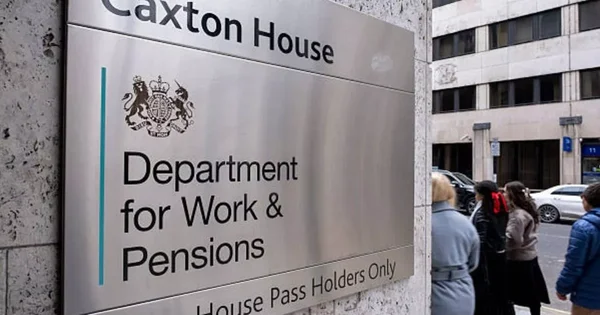Let’s Break This Down Together...
You’ve probably wondered whether your professional membership fees can knock something off your tax bill. If you’re paying for things like union dues, industry body memberships, or professional licences, the answer might just be yes.
This guide walks you through exactly what qualifies, how to check if your membership is on HMRC’s approved list, and how to make a claim whether you’re employed or self-employed. We’ll also explain how much tax relief you can expect and what records to keep.
It’s all about making sure you don’t miss out on money you’re entitled to. Let’s find out how to get some of it back.
What counts as a professional membership fee?
For tax purposes, professional membership fees include subscriptions to approved professional bodies and learned societies that HMRC recognises. This can include a college, institute, or national association, provided they are on HMRC’s approved list. These organisations must appear on HMRC’s official list (known as ‘List 3’).
The membership must be relevant to your job. For example, if you’re an accountant, your ACCA or ICAEW fees would qualify, but a gym membership wouldn’t.
Annual subscriptions, registration fees and certain licence fees all count. However, one-off joining fees or fees that aren’t annual subscriptions typically don’t qualify.
Can I claim tax relief for professional membership fees in the UK?
Yes, you can claim tax relief on professional membership fees if you pay the fees yourself as an employee. The membership must be necessary or helpful for your job, and it must be directly related to your profession or professional practice.
The organisation must also appear on HMRC’s approved list. Both employed and self-employed people can claim, but the process differs. Employers may require or value certain professional memberships for their employees.
If you’re employed, you’ll claim directly from HMRC. Employees on the PAYE system may see their tax code adjusted to reflect the relief. If you’re self-employed, you’ll deduct these costs as business expenses on your tax return.
You can claim for multiple memberships as long as each is relevant to your work. For example, a teacher might claim for both a teaching union and a subject-specific association.

Approved Professional Organisations and Learned Societies
When it comes to claiming tax relief on your professional membership fees, the status of the organisation you belong to is key. Only fees and annual subscriptions paid to approved professional organisations and learned societies are eligible for income tax relief. These bodies must be relevant to your job and appear on HMRC’s official list of approved professional bodies often referred to as “List 3”.
Approved professional organisations cover a wide range of professions and industries across the UK. For example, accountants can claim tax relief on their annual membership fees paid to the Association of Chartered Certified Accountants (ACCA), while those in agriculture might belong to the Royal Agricultural Society of England (RASE).
It’s important to note that not all fees and subscriptions qualify. You cannot claim tax relief on life membership subscriptions, or on any fees paid to organisations that are not on HMRC’s approved list. Additionally, if your employer pays your membership fee either directly or through payroll, you cannot claim tax relief on that amount yourself. Only the portion of the membership fee you pay personally is eligible for relief.
To check if your organisation qualifies, visit the HMRC website and review the most up-to-date list of approved professional bodies and learned societies. The list is updated regularly to reflect changes in names, new additions, and removals, so it’s important to check each tax year before claiming tax relief on your membership subscriptions.
How much tax relief can I get?
The tax relief equals the subscription cost multiplied by your tax rate. So if you're a basic rate taxpayer (20%), you'll get back £20 for every £100 spent on eligible fees.
Higher rate taxpayers (40%) get £40 back per £100, while additional rate taxpayers (45%) receive £45 back per £100. There's no upper limit to what you can claim.
For example, if you pay £200 for a professional membership and you're a basic rate taxpayer, you could claim £40 back (£200 × 20%). I once forgot to claim my £350 CIPD membership for three years – getting £210 back as a higher-rate taxpayer was a lovely surprise!
All memberships must be necessary for your work and on HMRC's approved list. The savings can add up significantly over your career.

How to claim if you're employed
This section provides guidance for employees on how to claim tax relief on professional membership fees. Employees can use the government’s online service at GOV.UK or log into their HMRC personal tax account.
Alternatively, employees can complete and submit form P87 for claims under £2,500. If you already complete a Self Assessment tax return, include the claim there.
You’ll need details of the professional body, how much you paid, and when. Keep receipts or membership confirmations as evidence.
For further guidance, HMRC provides online instructions specifically for employees claiming tax relief on professional membership fees.
You can claim for the current tax year and go back up to four previous tax years. So if you’ve never claimed before, you might be due a nice little windfall!
How to claim if you're self-employed
Self-employed individuals claim differently. You'll record professional memberships as allowable business expenses on your Self Assessment tax return.
Include these costs under "professional fees and subscriptions" in the self-employment section. This reduces your taxable profit, which in turn lowers your tax bill.
Make sure to keep all receipts and membership documentation for at least five years. HMRC may ask to see them during an enquiry.
If a subscription serves both personal and business purposes, you'll need to apportion the cost fairly. Only the business portion is eligible for tax relief.

Common questions about professional membership tax relief
What if my employer pays part of the fee?
You can only claim relief on the portion you paid yourself. If your employer contributes £50 toward a £200 membership, you can only claim relief on the £150 you paid.
Can I claim for professional exams and qualifications?
Generally no. Initial qualification costs don’t qualify, but annual professional subscriptions after qualifying usually do.
What if my subscription covers multiple tax years?
You can only claim for the portion that relates to the current tax year. For a two-year subscription, you’d claim half in each tax year.
How do I know if my professional body is approved?
Check HMRC’s List 3, which contains all approved professional bodies. Most major professional organisations are on this list.
Does tax relief for professional membership fees apply in Wales?
Yes, the rules for tax relief on professional membership fees generally apply across the UK, including Wales. However, always check HMRC’s list of approved bodies for any region-specific details relevant to Wales.
Final thoughts
Claiming tax relief on professional memberships is a simple way to reduce your tax bill. The savings might seem small, but they add up over your career.
Always keep records of your professional subscriptions. Check if new memberships qualify before assuming you can claim tax relief.
Set a reminder to claim each year – it's your money, after all! Many people forget to claim this relief and miss out on hundreds of pounds over their working lives.
Pie tax: Simplifying Professional Membership Fees Tax Relief
Keeping track of all your professional subscriptions and claiming the right tax relief shouldn't be a headache. The UK's first personal tax app makes this process painless by automatically identifying which memberships qualify.
Pie tax shows you exactly how much relief you're entitled to based on your tax band. We help you claim it directly from HMRC without the usual paperwork.
For self-employed professionals, we automatically categorise your subscriptions as allowable expenses. This ensures you never miss out on legitimate tax deductions that could lower your bill.
The app securely stores digital copies of your membership receipts. You'll have everything handy if HMRC ever asks for evidence.
Want to see how much you could save on your professional memberships? Explore the Pie tax app to find out.

Quick and Easy Guide to Add Expenses
Follow these steps to add expenses in the Pie App
Swipe right on any eligible transaction to add it as an expense you want to declare on your tax return, moving it to the ‘expense’ tab.Step 1

Use the ‘Quick Add’ feature to manually enter any additional expenses not found in your bank transactions for your self-assessment.Step 2










